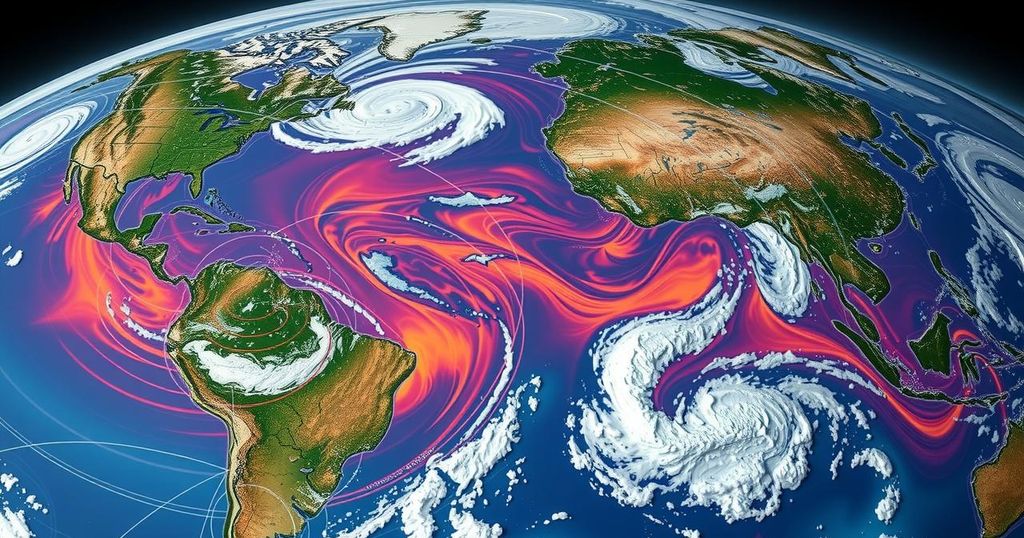La Niña has emerged in the equatorial Pacific, leading to cooler ocean temperatures and anticipated impacts on global weather patterns. This development is expected to worsen drought conditions in California and the southern US, while affecting agriculture in South America. The phenomenon’s influence may also result in increased storms in the Pacific Northwest and a higher likelihood of rainfall in parts of Indonesia and Australia.
La Niña has officially developed in the equatorial Pacific Ocean, which has significant implications for global weather patterns. This phenomenon is characterized by ocean surface temperatures dropping approximately 0.9 degrees Fahrenheit (0.5 degrees Celsius) below normal, according to Michelle L’Heureux, a forecaster at the US Climate Prediction Center. The onset of La Niña is expected to exacerbate drought conditions in California and the southern United States, while affecting agricultural landscapes in South America.
For the past several months, scientists have anticipated this cooling trend in the Pacific. The Philippines’ weather agency confirmed the event’s commencement recently. “La Niña has finally emerged,” stated L’Heureux, highlighting the gradual development of the phenomenon. The atmospheric changes induced by this temperature drop will likely lead to increased storm activity in the Pacific Northwest, leaving the southern regions of the United States, especially California, facing drier conditions, while cooler temperatures are expected in the northern Great Plains.
On a broader scale, La Niña can increase the risk of drought in critical agricultural regions like Argentina and Brazil, while delivering heavier rainfall across Indonesia and northern Australia. Although it took time for La Niña to manifest, forecasts suggest a 60% probability that it will diminish by the March to May period of 2024.
La Niña is part of a broader climate cycle that includes El Niño and plays a critical role in shaping global weather patterns. Understanding its onset and effects is vital for preparedness against potential impacts such as droughts and floods. Observations and predictions from authoritative sources, including the US Climate Prediction Center, assist governments, agricultural sectors, and other stakeholders in developing strategies to mitigate adverse effects stemming from these climatic events.
In conclusion, the emergence of La Niña in the equatorial Pacific signals a noteworthy shift in global weather dynamics. This event is predicted to exacerbate drought conditions in much of California and the southern United States, while also introducing cooler temperatures in the Great Plains. It is imperative to monitor the progression of La Niña as it has the potential to influence agricultural productivity worldwide, particularly in regions already vulnerable to climate variability.
Original Source: www.energyconnects.com






